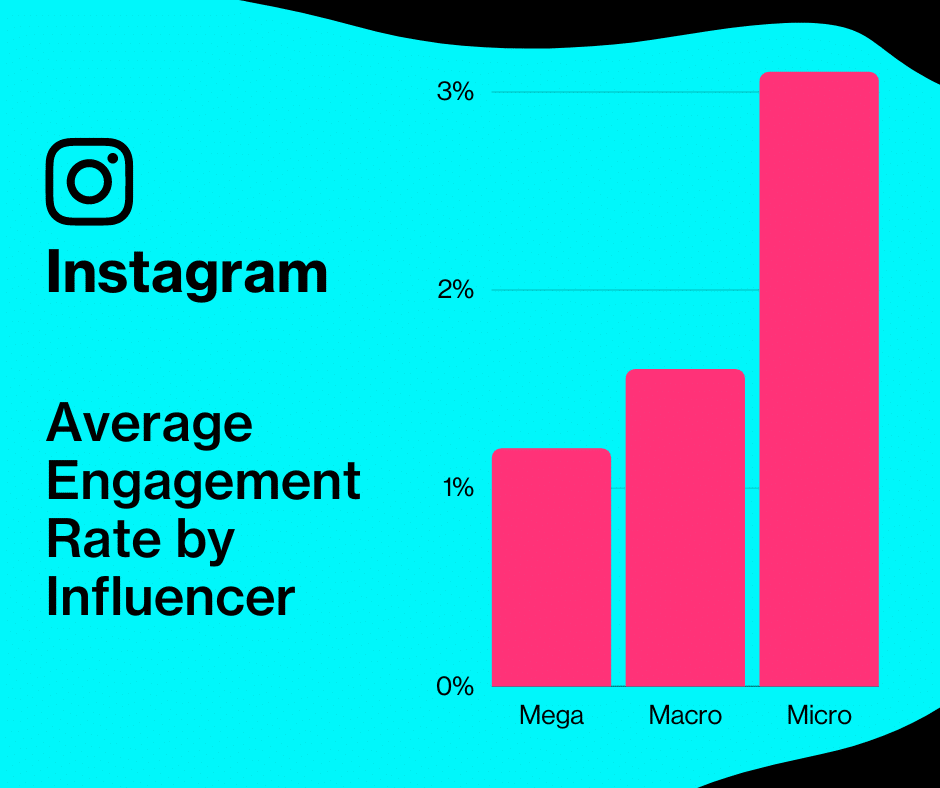
You Can’t Afford to Ignore Micro-Influencers! Here’s Why
Micro-influencers are the new generation of influencers. They have a smaller following than traditional influencers, but that doesn’t mean they don’t have just as much, or more, potential for marketing your products. This article will give you tips on finding micro-influencers on Instagram, what type of content they produce, and why you should work with them.
Micro-influencers have grown in popularity on social media in recent years. Gone are the days when the bigger the following, the better. The micro-segment of influencers is emerging as some of the most compelling marketers around.
Because of their specialized knowledge in an area, these outgoing mavens are frequently well-known on the internet. The hyper-focus is ideal for businesses that often leverage it for competitive differentiation.
Of course, each type of influencer has advantages and disadvantages. And the list of benefits is mounting as companies look to support the consumers that support them.
If you want to continue growing and connecting with your audience, you cannot ignore these consequential individuals.
Who Are Micro-influencers?
Micro-influencers are people who have a loyal following on social media platforms like Instagram, TikTok, and YouTube. As a rule of thumb, they have between 10,000 to 50,000 followers. They also tend to specialize in a particular topic or niche.
The influencer industry divides itself into four categories. They include mega, macro, micro, and nano influencers.
Here’s a quick breakdown of influencer follower count.
Mega-influencer
Meg-influencers are celebrities and A-listers. Their audience is massive, coming in at over one million followers.
Macro-influencer
Macro-influencers are usually internet famous. They have between 50,000 to 1 million followers.
Micro-influencer
Most often micro-influencers are industry experts or topic specialists. Their following is devoted and sits between 10,000 to 50,000.
Nano-influencers
A nano-influencer can be a person with notoriety in their community, such as a neighborhood or school. They have the least number of followers, generally fewer than 10,000.
Micro-influencers occupy a sweet spot. They are not so big and famous that they cost a fortune to use. On the other hand, they aren’t so little that their impact is inconsequential.
They are not celebrities or famous people, but they have a strong following. They often have a smaller and more targeted audience than celebrities and influencers, making them perfect for certain brands and products. Particularly given that micro-influencers frequently become well-known authorities in a particular subject area.
Why Are Micro-influencers So Valuable?
Brands partner with micro-influencers for many purposes. Yet, the value proposition revolves around sox big advantages.
#1 – Engagement
Micro-influencers are usually not celebrities. They are not famous in the traditional sense. They are people with a large social media following dedicated to them and the brands they love.
One of the top reasons marketers favor micro-influencers is that they have a very engaged audience. They have followers who know them personally and want to hear what they have to say about certain topics or brands.
Micro-influencer Engagement Rate
Engagement is the most meaningful statistic to use when assessing the effectiveness of social media. In other words, how many people interact with the posts or stories? Do they like, share, and comment?
No other form of influencer can come close to this level of success. Micros get an average of 3.1% engagement on every single post. Pretty much the gold standard in the industry. Mega-influencers come in at 1.2% average engagement rate. Although 33% better, macro-influencers still only get 1.6% of their followers interacting with their content.
Micro-influencers have an average engagement rate of 3.1%. This ranks them first–more than 158% better than mega-influencers and 94% better than macro-influencers in terms of influence.

#2 – Believable
One of the grounds for the great value of micro-influencers also happens to be the same fact some brands overlook them. Follower count.
Although this might be counterintuitive, we’ll explain.
An enormous follower count can be alluring. Imagine access to all those people?
The reality is all those people see right through the hype. Studies are showing that the reign of the mega-influencers is waning. People are lumping what these superstars say into the same bucket as advertisers.
On the flip side, public perception of micro-influencers is the highest of all four influencer categories. They’re also the most trustworthy and genuine of the bunch.
When it comes to the most preferred type of influencer, the micro category is hands down the most popular. According to the State of Influencer Marketing just published,
Nearly 80% of marketers choose micro-influencers before all other types of influencers.
#3 – Obtainable
Besides believability, micro-influencers are much more accessible. They are doing their own posts and responses. Reaching out and interacting with them is pretty simple.
Corporations are increasingly choosing to partner with micro-influencers more than any other group.
In 2020, just 80% of business marketers wanted to collaborate with micro-influencers. By 2021, that number had risen to 90%.
#4 – Target Audiences
Another reason micro-influencers are valuable is that they can help you reach new markets. Since most micro-influencers target a niche area, they can help you reach new areas or types of customers through their posts and content.
#5 – Affordable
The expense of working with influencers climbs as the number of followers grows. For some brands, the cost of working with mega and macro-influencers is entirely out of reach. What’s more, at these price points, marketers are forced to devote all of their resources to a single piece of content.
Influencers get compensated based on the size of their fan base when they post sponsored material. Using micro-influencers is a viable option for marketers due to the smaller audience sizes they have to deal with.
Many people will work with brands for incentives or rewards. Micro-influencers don’t always expect financial payment like people with vast social followings. In fact, most in this segment will spread the word about your brand and products in n exchange for free or discounted products.
It is common for these influencers to go above and beyond for their sponsors to build a long-term relationship with them.
These elements frequently provide a considerable return on investment for the money a brand spends.
#6 – Relevant
Last but not least, another reason why micro-influencers are valuable is that they will help you stay relevant. As a result, your firm will always be at the cutting edge of your industry or niche market if you collaborate with these experts.
Recap
Micro-influencers have all the right characteristics to help brands naturally reach new audiences while being very genuine.
Because of their smaller but highly engaged followings, this subset of influencers has an easier time connecting with a committed and passionate audience. As a result, they’re less expensive than well-known social media stars and more inclined to work with brands they respect.